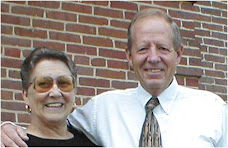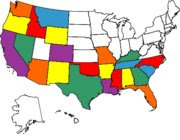Weather: low 41 degrees, high 72 degrees, partly cloudy, windy
Happy Valentine's Day to all the sweethearts.
We took a road trip over to Palo Pinto and Mineral Wells today. In the interest of not getting too wordy, I'll only talk about what we saw in Palo Pinto and our trip over there, along with some of the history of the area. I'll catch everybody up on Mineral Wells tomorrow.
Palo Pinto Count y is located about 50 miles northwest of where we are staying. Our route took us through the very small towns of Lipan, Santo, and Lone Camp. The little towns may have been of some consequence 100 years ago, but they are just crossroads now with small businesses that serve the areas. The road over to Palo Pinto is a two lane road that passes through some of the most rugged countryside in the area. Palo Pinto is Spanish for painted post or tree - the Indians in the area painted tree trunks along the banks of the north fork of Palo Pinto Creek.
y is located about 50 miles northwest of where we are staying. Our route took us through the very small towns of Lipan, Santo, and Lone Camp. The little towns may have been of some consequence 100 years ago, but they are just crossroads now with small businesses that serve the areas. The road over to Palo Pinto is a two lane road that passes through some of the most rugged countryside in the area. Palo Pinto is Spanish for painted post or tree - the Indians in the area painted tree trunks along the banks of the north fork of Palo Pinto Creek.
 y is located about 50 miles northwest of where we are staying. Our route took us through the very small towns of Lipan, Santo, and Lone Camp. The little towns may have been of some consequence 100 years ago, but they are just crossroads now with small businesses that serve the areas. The road over to Palo Pinto is a two lane road that passes through some of the most rugged countryside in the area. Palo Pinto is Spanish for painted post or tree - the Indians in the area painted tree trunks along the banks of the north fork of Palo Pinto Creek.
y is located about 50 miles northwest of where we are staying. Our route took us through the very small towns of Lipan, Santo, and Lone Camp. The little towns may have been of some consequence 100 years ago, but they are just crossroads now with small businesses that serve the areas. The road over to Palo Pinto is a two lane road that passes through some of the most rugged countryside in the area. Palo Pinto is Spanish for painted post or tree - the Indians in the area painted tree trunks along the banks of the north fork of Palo Pinto Creek.The first white man in the area is assumed to have been William (Bigfoot) Wallace, who surveyed the area in 1837.
In 1856 the Texas State Legislature established Palo Pinto County from parts of Bosque and Navarro counties. The county was organized the next year, with the town of Golconda chosen to be the seat of government. The town was renamed Palo Pinto in 1858.
 At this time, the town of Palo Pinto has few businesses, but is the seat of government for the county. The courthouse is here, as are several old homes, old jail, and other reminders of the roots of the town. It appears that the citizens of the town are attempting to build a tourist industry out of the history of the area.
At this time, the town of Palo Pinto has few businesses, but is the seat of government for the county. The courthouse is here, as are several old homes, old jail, and other reminders of the roots of the town. It appears that the citizens of the town are attempting to build a tourist industry out of the history of the area. 
Even though Palo Pinto is the county seat, the largest town in the county is Mineral Wells, which I will write about tomorrow.
More later, be safe.
Today's County - Palo Pinto County, Texas: A Land, A River, A People




No comments:
Post a Comment